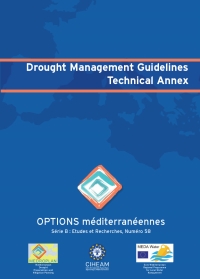| Article précédent | p. 469-485 | Article suivant |
Methods of risk management (technology and water quality) [Part 2. Examples of application]
This chapter presents a case study system which consists of 15 large reservoirs in the Northern part of Tunisia. The system encompasses 36 individual demand centres grouped into three principal water user types: urban, irrigation and environmental. System topology studied indicates that the analyses are to address a rather difficult operations research problem. On the one hand, the system itself can contain multiple reservoirs and demand centres, which can be linked together in an intricate network. On the other hand, the consideration of salinity of reservoir inflows and releases, and thereby allocations to individual demands, adds additional complexity to the operation problem. It is obvious therefore that the optimization problem must apply criteria which will be able to address both the quantity and salinity of reservoir allocations to individual demands. The main goal of this work is to assess the applicability of a combination of several operations research approaches to a strategic operational problem of complex reservoir supply systems. System topology requires that the adopted approach for the analyses be able to tackle rather complex system configurations. With regard to such a system topology, the focus of the work is limited to the optimization of the long-term operating strategy of a multiple reservoir water supply system.
- [ Afficher ]
- [ Télécharger ]
- [ Exporter la citation ]
Vous pouvez télécharger la citation au format :
- [ Imprimer ]
-
Mots-clés
ANALYSE DE SYSTEME, EFFICACITE, EVALUATION, GESTION DES EAUX, METHODE D'OPTIMISATION, RESERVOIR D'EAU, TUNISIECiter cet article
Louati M.H., Lebdi F. Methods of risk management (technology and water quality) [Part 2. Examples of application]. In : Iglesias A. (ed.), Moneo M. (ed.), López-Francos A. (ed.). Drought management guidelines technical annex. Zaragoza : CIHEAM / EC MEDA Water, 2007. p. 469-485. (Options Méditerranéennes : Série B. Etudes et Recherches; n. 58). http://om.ciheam.org/om/pdf/b58/00800551.pdf



